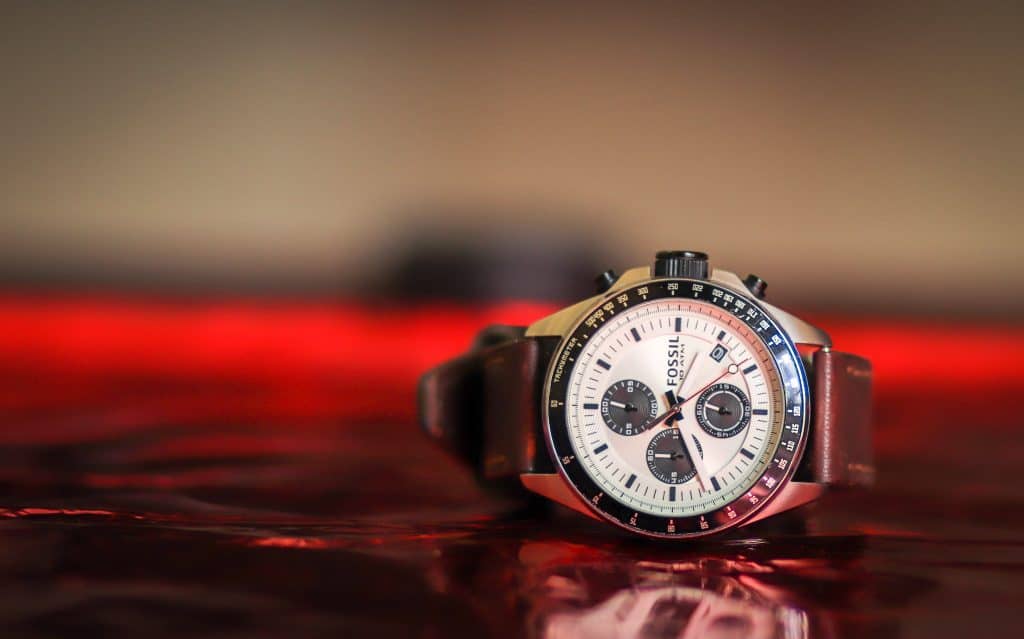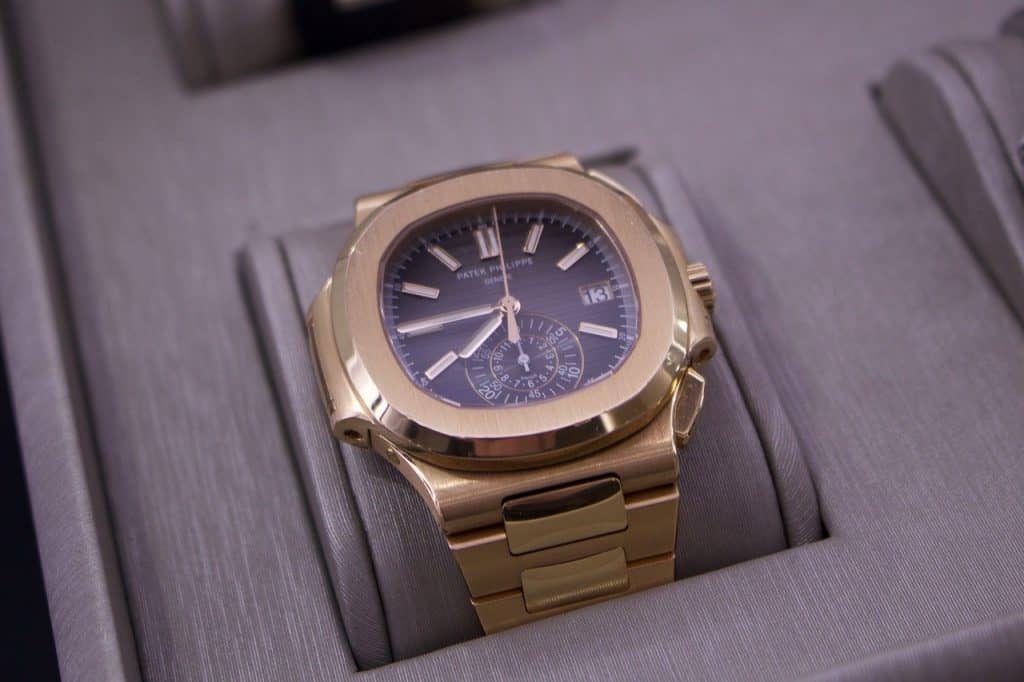
A quality watch is said to last a lifetime, but that doesn’t mean it could use a little help lasting so long. This is done by servicing your watch, but how can you tell your watch needs to be serviced?
You should service your watch when you see that it no longer tracks time correctly or there is some filth inside the case. Furthermore, it’s good practice to service your watch once every 6 to 12 months.
Servicing your watch is always a good thing to do, especially if you own a luxury watch. In this article, we’ll make sure you know when it’s time to service your precious watch!
Table of Contents
When Does A Watch Need To Be Serviced
Servicing your watch is something everyone should do, especially if they own a luxury watch. But knowing when it’s time to service it could be a difficult task. Luckily, there are a few clear signs that make it a lot easier for you to know that it’s time to have your watch serviced.
One of the most common signs that it’s time to have your watch serviced is if it no longer tracks time correctly. However, sometimes you can see moisture or dust inside the case, which is also a sign that you should have your watch serviced.
Lastly, sometimes your watch can just feel ‘off’. If you have this feeling, maybe go have it checked by a professional.
In general, it’s good practice to have your watch serviced 2-4 times a year. Servicing your watch every 6 to 12 months ensures your watch will always work amazingly!
Time No Longer Tracks Correctly
One of the clearest signs that your watch is in need of servicing is when it no longer tracks time correctly. When you start to notice that your watch is becoming inaccurate, it’s time to have it serviced.
Now, keep in mind that almost every watch on the market will be at least a little inaccurate, but we’re talking about a few seconds a year here. When you start to see your watch being much more inaccurate than you’re used to, this is your sign.
Another factor that can play a role in the inaccurate tracking of time has to do with the batteries of quartz watches. A quartz watch tracks time with the help of a battery. This battery powers the inside mechanisms, which makes sure the watch is tracking time.
When the battery starts to die out, though, you can start to see some jumpy and erratic movement in the second hand. This is a clear sign you need to change the battery, which is done in a servicing!
Your watch tracking time incorrectly could also be a sign that you need to have it lubricated again. A watch is made with hundreds of small parts, all working in harmony. These parts do need to be lubricated to make sure it all moves smoothly.
Lubrication is once again done in a servicing. Just like with replacing the battery, lubrication can only be applied once the watch is taken apart. And in a servicing, your watch will be disassembled, cleaned, oiled up, and fixed.
There’s Moisture Or Filth Inside The Case
Moisture inside of the case is another sign that you should have your watch serviced. In fact, if there’s any moisture inside, you should go to your watchmaker as soon as possible.
A watch is not designed to be able to withstand any sort of moisture inside the case. The moisture can throw off any of the 100+ parts and it can dry up the lubrication.
What’s even worse is if there’s salt water inside the watch. Salt water can have a corrosive effect, and since all the watch parts are so small, a tiny drop of salt water can make the inside parts rust.
When this happens, you will need to replace a bunch of the parts, which can cost you quite a lot of money. You’re practically replacing the insides of the watch, at which point, you might as well buy a new one.
If you ever spot any moisture inside the case, immediately go to your watchmaker. With any luck, he will be able to dry the inside of the case with no lasting effects.
If, for some, reason, you cannot immediately go to your watchmaker, there are a few tricks that could help:
- Always wear the watch, even when you’re sleeping. Your body temperature could be warm enough to push moisture away from the delicate movement.
- Place the watch on something warm, like a lamp or radiator. This once again will push away the moisture from the movement
- Unlike with electronics, placing your watch in a bag of rice won’t help. The moisture is inside of the case and in order to get the moisture out, the back of the watch needs to be removed.
Still, it’s always best to go to your watchmaker as soon as possible. Moisture inside the case is one of the most damaging things that can happen to a watch and repair costs could run up into multiple thousands of dollars.
When Your Watch Feels ‘Off’

Your watch feeling ‘off’ could mean several things. Maybe you feel like the hands or dial seem loose, maybe you hear a louder ticking sound than you’re used to, or maybe there’s some sort of rattling sound inside the case.
These could all be signs that there is something wrong inside the watch. Now, usually, this just means that maybe a screw has jolted a little looser, but it never hurts to get it checked out by someone who can find out what’s actually going on.
This is a very vague sign of your watch needing a service, but it’s one you should keep in mind nevertheless. If you wear your watch every day, you start to get to know it, and once something looks, feels, or sounds off, make sure to have it checked out. Some added caution for your beautiful watch will never hurt.
It’s Good Practice To Service Your Watch Before You Go On Vacation
Aside from these obvious signals and your regular servicing, it’s also good practice to service your watch right before you go on a vacation.
When you’re on a vacation, your watch is exposed to many things that could potentially harm it. Firstly, in the airport, your watch is exposed to the security scanners, which could magnetize the watch. When your watch is magnetized, a magnetic field will be created inside the watch, which causes the hands to be sticky and jumpy.
Furthermore, during your holiday, your watch might be exposed to water, salt water, and higher temperatures, which can all cause some issues.
With that in mind, it never hurts to have your watch checked beforehand. Make sure there are no loose screws, have it tested for magnetization, and test its water resistance.
If all of these are in tip-top shape, the chances of your watch being damaged while you’re on vacation are minimal. Luckily, a simple and easy check-up like this isn’t too expensive and won’t take that long either. Trust me, it’s better to pay a small amount of money up-front than to have to spend thousands on repair costs.
What Does Servicing A Watch Actually Mean
Now that you know when you should service your watch, you might start to wonder, what does a service actually do?
When your watch is serviced, the watch is disassembled, cleaned, oiled, and reassembled. After that, the watch will (optionally) be polished. A servicing makes sure your watch is looking and functioning as new.
A servicing is basically a large quality check. Your watch will be disassembled carefully and every individual part will be checked and cleaned. This makes sure that all the internals are still functioning as they should and that there’s no dust or filth inside.
After cleaning all the individual parts, the watch will also be checked on lubrication. In order for a watch to function smoothly, some of the parts need to be lubricated. In a servicing, these parts will be lubricated again, making sure that everything inside the watch moves as smoothly as possible.
When the watch is all cleaned and oiled up, the watch will be reassembled. From here, some watchmakers will do some general tests, such as testing the water resistance, but not every watchmaker will do that.
From here, you usually have the option to polish your watch as well. When a watch is polished, a small layer of the metal will be scraped off. This practically removes thin scratches and dents, but it will also alter the shape of the watch.
Polishing a watch is something that a lot of people do not want, so this part is, of course, optional. I’ve written a whole other article that dives much deeper into watch polishing, which you can find here!
What Happens If You Don’t Service A Watch

Whether you service your watch or not is up to you. For some cheaper watches, servicing won’t really be necessary, as a service could end up being as expensive as the watch itself. However, when you have a more luxurious watch, a service every now and then isn’t a bad idea. But what happens if you don’t service your watch?
If you don’t service your watch, your watch could experience some issues down the road. Loose hands and dial, as well as shocky, jumpy movements of the hands could result from this.
Slowly over time, your watch will start to work less and less optimal. The lubrication could start to dry up, leading to a shocky movement, water could leak inside, leading to a rusty inside, and screws could start to loosen up, leading to loose hands and dial.
Even though servicing your watch is great, especially for the longevity of your watch, it isn’t necessarily mandatory. Many people don’t even know that they can service their watch, and their watches still work fine. I personally have a nice Seiko watch that hasn’t been serviced in more than 2 years.
However, not servicing your watch is generally something you can get away with when you have a cheaper watch. Luxury watches have much more intricate designs and many more complications. This makes a service not mandatory but definitely recommended.
Still, many of the upper-tier luxury brands make watches that function properly for many, many years, even without a servicing. However, when it comes to a luxury watch, why would you not ensure it works optimally at all times.
Even though you can get away with not servicing your watch, eventually, the watch will start to deteriorate. This is something you can easily avoid by a servicing every now and then. No one would spend a few thousand dollars just to have your watch slowly break down over time.
How Often Should You Service A Watch
You should service your watch once every 6 to 12 months. Aside from this regular routine, you should also have your watch serviced when it no longer tracks time correctly or there’s moisture inside the case.
A watch really doesn’t need to be serviced that often. Keep in mind that most watches can last a really long time without any maintenance, especially the more expensive luxury watches.
These are watches that are made to last a lifetime, so you do not need to have them serviced every month. That’s why it’s recommended to have it serviced once or twice a year.
Having your watch serviced once or twice a month will ensure that any faults or broken parts are picked up early enough to not cause any lasting damage.
Aside from the once or twice a year servicing routine, you should always have your watch serviced or checked out if something is broken. Maybe there’s moisture or dust inside or maybe you have loose hands; these are signs to have your watch serviced.
And as far as cheaper watches go, a service might not even be worth it at all. A service will cost you money, and for a cheaper watch, the cost of a service might not be worth it at all. In some instances, a service will cost you as much as a brand new watch would.
Maybe if it’s a very old timepiece, or if it has any special value, it is worth it. But generally, a service is mainly used for more high-end watches.
Do All Watch Types Need Servicing

As you might already know, there are a few different types of watches on the market; automatic watches, quartz watches, and mechanical watches.
All of these types of watches function differently, so you might wonder, do all of these types of watches need servicing? Or do only a few of them benefit from a service?
Automatic Watches
Automatic watches are beautiful watches with very complicated insides. Without going in-depth on how they work, an automatic watch is powered by the movement of the wearer.
In order to capture the movement of the wearer, the watch makes use of a rotor and mainspring. These are once again, very intricate and complicated designs, and once something inside breaks or doesn’t function properly, the watch can be damaged.
Therefore, an automatic watch will definitely benefit from a service. But because automatic watches are made with such care, you only really need to service them once every 3 years.
Quartz Watches
Quartz watches are some of the most common watches on the market and they function with the use of a battery. This battery sends a shock of energy that powers the mainspring, which then unwinds and shows the correct time.
One of the most common reasons a quartz watch could benefit from a service is when the battery needs to be replaced. A dead battery is something you want to get rid of as soon as possible, as dead batteries can start to leak and damage the insides.
Aside from a battery replacement, a quartz watch can also benefit from proper cleaning and a check-up on all the parts.
Mechanical Watches
Mechanical watches are watches with very intricate designs, usually made by hand. The average mechanical watch is made with over one hundred different parts, so it’s easy to see why a service would greatly benefit such a watch.
When even just one of the hundreds of parts breaks, the inside of the watch can be severely damaged. One broken part usually leads to multiple more broken parts, leading to a very damaged watch.
Because of the intricate designs of mechanical watches, a service will never hurt.
Pocket Watches
Pocket watches are very similar to regular wristwatches. The only main difference is that a pocket watch is kept in your pocket, whereas a wristwatch is on your wrist.
But the movements inside the watch are the same. Pocket watches make use of either a mechanical, automatic, or quartz movement, so the same principles apply!
